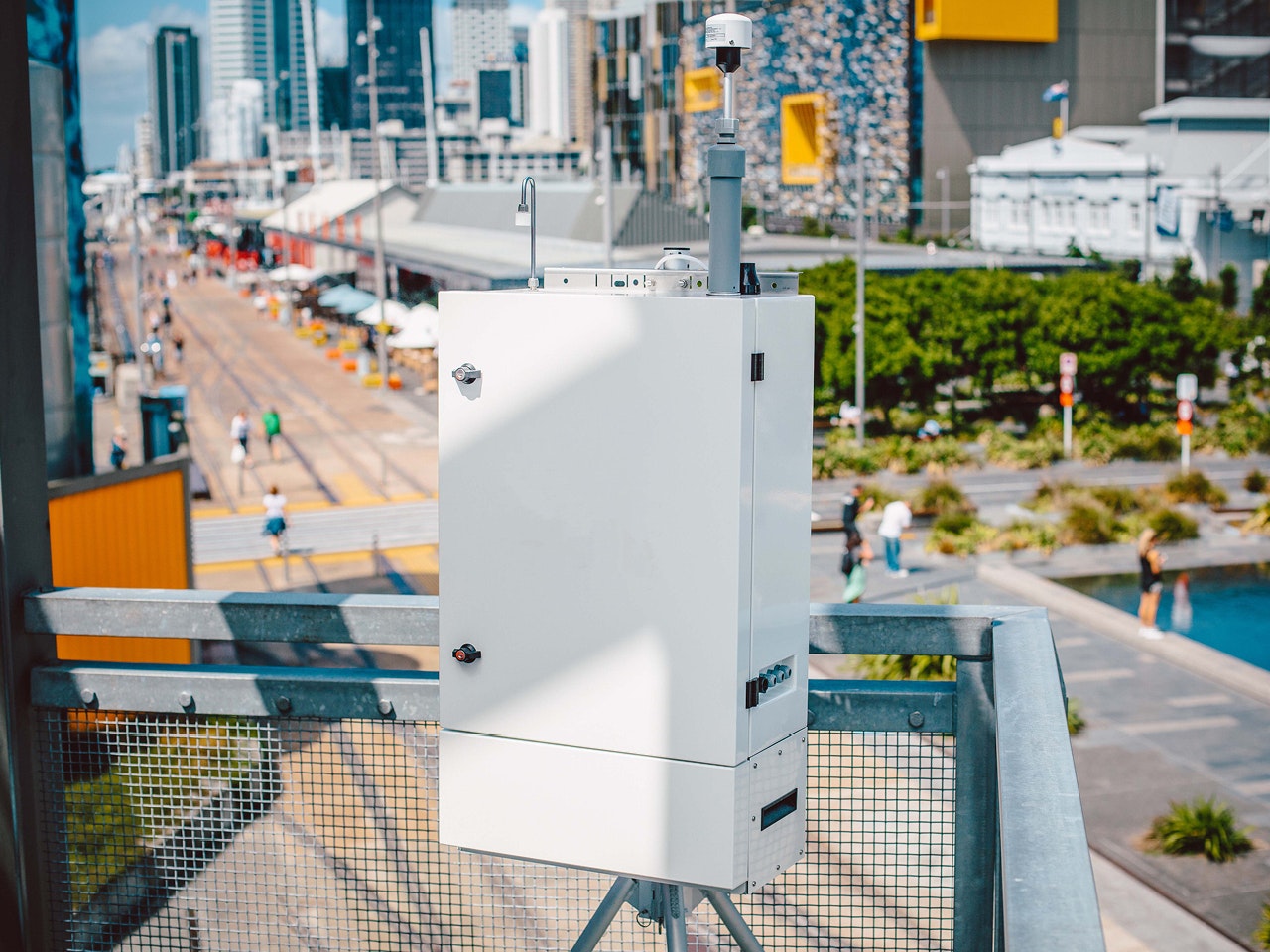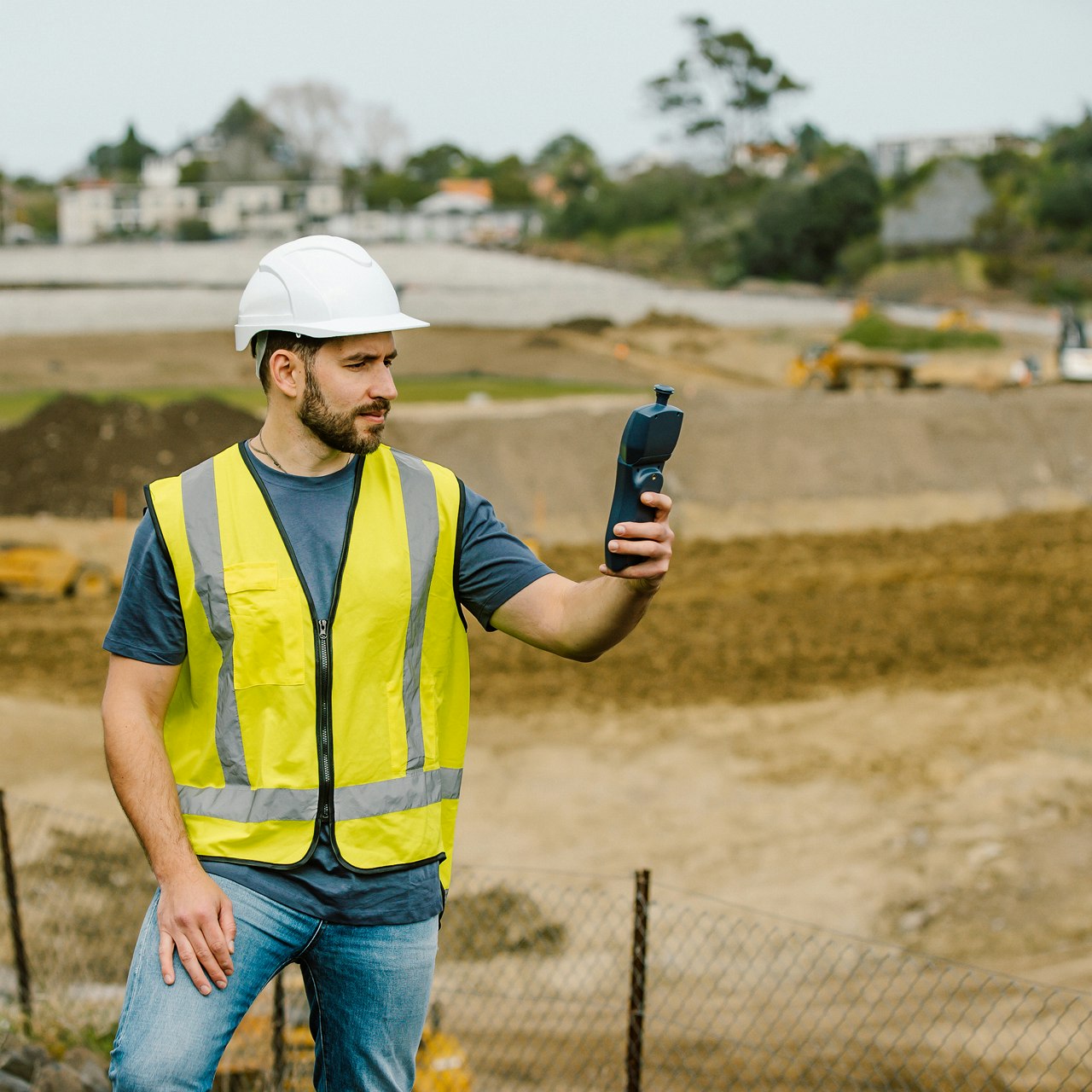Measurements
Sulfur Dioxide SO2
Aeroqual designs and delivers monitors that measure sulfur dioxide (SO2). Choose from our perimeter or handheld air monitoring range.
Here we cover SO2 measurement principles, specifications and performance.
Overview of sulfur dioxide
Sulfur dioxide (SO2) is one of six criteria air pollutants identified by the US EPA and is monitored extensively around the world by regulatory agencies.
SO2 is emitted directly from industrial processes and is also directly emitted by vehicles, especially if fuel quality is poor.
Perimeter air quality monitors
The SO2 analyzer module features in our perimeter air quality monitors: AQS 1 Air Quality Monitor and AQM 65 Monitoring Station.
Sulfur dioxide module measurement principle
The SO2 module uses a patented automatic baseline correction (ABC) design to measure SO2 in ambient air. It combines an advanced electrochemical SO2 sensor and a sample/zero cycling operation to deliver near reference performance in ambient SO2 monitoring.
The sensor used in the SO2 module is an electrochemical gas sensor. The sensor generates an electrical current in nA which is proportional to the concentration of gas which comes in to contact with the sensor.
The module design creates two different flow paths, one of which passes through a proprietary scrubber to remove SO2 to produce a baseline measurement. The module has a controlled flow rate. The flow rate is determined by a flow control orifice on the exhaust side of the sensor and measured at the inlet to the sensor module (expected to be approximately 60 mL min-1).
The sensor current is measured during both the baseline and sample measurement states and these values are used to calculate the SO2 concentration using a proprietary algorithm approximately once per minute.
Module specifications and performance
The SO2 module performance specifications are given in the table below.
SO2 Analyzer Module
Range (ppb)
0 - 10,000
Display Resolution (ppb)
0.1
Noise: Zero (ppb); Span (% of reading)
1; 0.02%
Limit of Detection (ppb)
2
Precision
0.14% of reading
Linearity (% of FS)
0.6%
24 hr Drift: Zero (ppb); Span (% of FS)
1; 0.3%
Module calibration and traceability
Just like a regulatory sulfur dioxide analyzer using UV fluorescence, the SO2 module can be field calibrated using standard calibration equipment and reference gases. This ensures the module calibration is fully traceable to NIST primary standards.
The SO2 module factory calibration is achieved using a zero-air source, certified calibration gas standards and a certified gas dilution calibrator. The Aeroqual AirCal 1000 or 8000 systems can be used to calibrate the SO2 module in the field.
Calibration frequency will be dependent on the user’s data quality objectives and Quality Assurance Project Plan (QAPP), but based on the low rate of field drift the recommended calibration frequency is 1-3 months.
To demonstrate performance, a six-point gas test, at known SO2 concentrations, was carried out using the equipment described above. The module shows good linearly (R2 = 0.99) over the 0 – 1000 ppb range studied.
Sulfur dioxide module time series plot
Sulfur dioxide module scatter plot of data with linear regression and coefficient of determination
Interferences
The Aeroqual sulfur dioxide module is specific towards SO2 but other gases in the environment may also cause a response from the SO2 sensor. These do not indicate a fault. These effects are part of the module behavior and should be considered when examining data.
The SO2 module response to other ambient air pollutants is documented in the table below.
Pollutant
Test Concentration (ppm)
Typical Module Response (ppm)
CO
1.0
0.005
NO2
0.1
-0.001
O3
0.1
-0.001
H2S
0.1
0.02
Ethylene
0.5
No response
Sulfur dioxide module expected lifetime
The non-catalytic chemical scrubber has an expected life of 2 to 3 years. The internal solenoid has an expected life of 2 to 3 years. The GSE sensor has an average expected life of 1 to 2 years in climates with moderate humidity and particle loading.
Handheld air monitors and fixed indoor monitors
The SO2 sensor head features in our handheld air quality monitors: Ranger and Series 500, and indoor fixed monitor range Series 900.
Sensor head measurement principle
The Aeroqual sulfur dioxide sensor heads use a gas sensitive electrochemical (GSE) sensor. The electrochemical gas sensor in the sensor head generates an electrical current in nA, which is proportional to the concentration of gas that comes in contact with the sensor. The sensor current is converted into SO2 concentration.
Sensor head specifications
The table below contains the sulfur dioxide sensor head specifications. These can be used on our Ranger, Series 500, and Series 900 products. The 0-10 ppm sensor is designed for outdoor environmental and indoor air quality monitoring. The 0-100 ppm sensor is designed for industrial health and safety monitoring.
Sensor code
ESO
ESP
Sensor type
GSE
GSE
Range (ppm)
0-10
0-100
Detection limit (ppm)
0.04
0.4
Accuracy of factory calibration
<±0.5 ppm 0-0.5 ppm
<±10% 0.5-10 ppm
<±0.5 ppm 0-5 ppm
<±10% 5-100 ppm
Display resolution (ppm)
0.01
0.1
Response time (seconds)
60
30
Sensor head cross sensitivities
Although the GSE sensor in the SO2 sensor head is designed to measure SO2, it does show cross-interferences to other gases. The table below shows the response in ppm of the SO2 sensor head to different gases.
Gas
Sulfur Dioxide (SO2) (SH ESO, SH ESP)
O3 1 ppm
-
CO 25 ppm
<0.4
NO2 1 ppm
-
SO2 1 ppm
-
H2S 1 ppm
<0.03
Ethylene 5 ppm
<2
CO2 400 ppm
-
H2 1 ppm
<0.003
NO 5 ppm
<±0.1
Products that measure sulfur dioxide
The following products measure sulfur dioxide, as well as particulate matter and gaseous pollutants in real-time.
Articles
Case Study - Occupational Health and Safety
Building a Reliable Air Monitoring Solution in Challenging Environmental Conditions in Iraq
Case Study - Urban Air Monitoring
Delhi’s First Mobile Air Monitoring Station Collects Valuable Air Pollution Data
Blog - Remediation
Producing Defensible Data: The Importance of Keeping Calibration Certificates Up to Date
Inquire about our sulfur dioxide products
Our SO2 advanced monitoring systems deliver hyper-local data and real-time alerts, giving you actionable data to make the decisions that matter.












